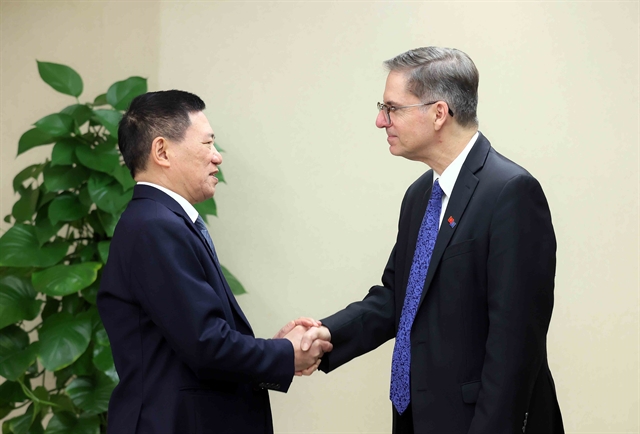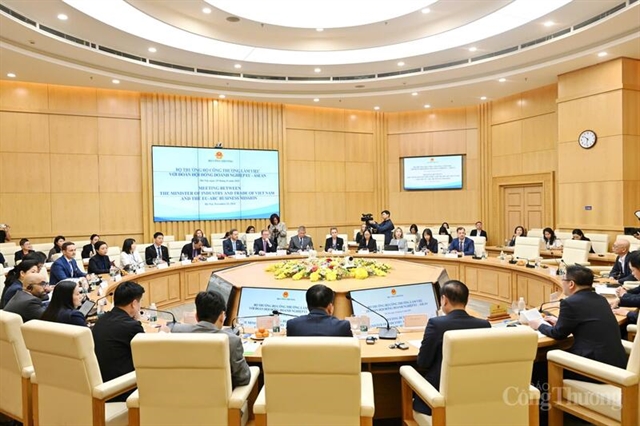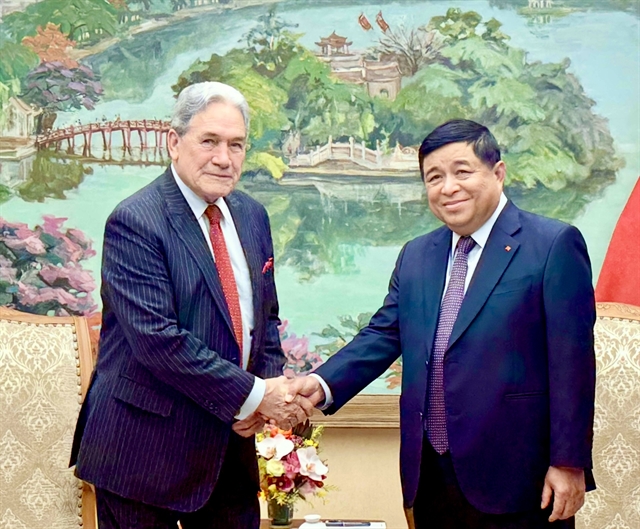 Society
Society

 |
| Prime Minister Phạm Minh Chính hands the Government's decision to approve HCM City's master planning scheme for the 2021-30 period to HCM City's leadership at the ceremony on Saturday. — VNA/VNS Photo Dương Giang |
HCM CITY — HCM City's master planning scheme embodies an innovative thinking, strategic vision, foresight and bold ambitions, Prime Minister Phạm Minh Chính said on Saturday.
Attending a conference announcing the master planning scheme for the 2021-30 period with a vision to 2050 in HCM City, PM Chính stressed that following this planning scheme is not solely the responsibility of HCM City but a task for the entire nation and region as a whole.
The master planning scheme, approved by the PM on December 31, 2024, aims to transform HCM City into a global, civilised, modern, compassionate, dynamic, and innovative city. HCM City is set to cultivate a quality workforce, foster modern service and industrial sectors, and lead in green economy, digital economy, and digital society. It aspires to become a national hub for economy, finance, trade, services, culture, education, and science-technology, achieving extensive global integration and a prominent position in Southeast Asia.
Simultaneously, the city seeks to offer high-quality living conditions, a rich cultural identity, a sustainable environment, and strong adaptability to climate change.
 |
| HCM City shines by the Sài Gòn river at night. — VNA/VNS Photo |
During the 2021-30 period, HCM City aims for an average annual gross regional domestic product (GRDP) growth rate of 8.5-9 per cent. By 2030, its per capita GRDP at current prices is projected at VNĐ385–405 million (US$14,800–15,400). The service sector is expected to account for over 60 per cent of GRDP, the industrial and construction sector around 27 per cent, and the agro-forestry- fishery sector roughly 0.4 per cent. The city also aims for the digital economy to contribute over 40 per cent of GRDP.
By 2030, the city's population is estimated at some 11 million, rising to around 14.5 million by 2050. The urbanisation rate is set to exceed 90 per cent, with a goal of 100 per cent of communes meeting the standards for model new-style rural areas, and 50 per cent achieving the criteria for smart rural communes. All districts are targeted to meet the standards for model new-style rural districts. By the end of 2030, the city plans to double its poverty threshold compared to the national average.
The PM outlined the city’s master planning scheme with 2 corridors, 3 sub-regions, 9 key spatial axes, and 1 coastal spatial axis; a multi-centre spatial structure; and the utilisation of outer space, maritime space, and underground space.
He called for effectively pooling and using all legal resources to promote traditional growth drivers such as exports, investment, and consumption. Additionally, breakthroughs should be made into new growth drivers, including green economy, digital economy, circular economy, sharing economy, knowledge economy, climate change adaptation, and sustainable development.
The government leader also suggested enhancing human development via training a quality workforce, nurturing talents and ensuring social welfare; increasing connectivity between the city and its surrounding areas, both at home and abroad, through the development of transport systems, production and supply chains, and market linkages.
The city was urged to pioneer in developing a comprehensive, strategic infrastructure system encompassing transport, digital infrastructure, health care, education, social services, sports, as well as both hard and soft infrastructure. The advancement of innovation, science-technology and digital transformation, along with the development of quality human resource training, were also highlighted.
The master planning scheme should align with the national, regional and sectoral master planning schemes, toward achieving double-digit growth this year, he said, proposing boldly piloting new mechanisms and policies, particularly for key projects such as the International Financial Centre, Cần Giờ port, the transport network connecting to Long Thành international airport, and the urban railway network.
Affirming the Government’s commitment to accompanying the city, ensuring that local residents truly benefit, PM Chính asked ministries, agencies and localities to act with this spirit.
He urged businesses, partners, and investors to continue cooperating and investing in the city, fostering a spirit of listening and understanding, sharing the vision and actions; working, benefiting, winning and growing together; enjoying joy, happiness and pride together.
Secretary of the municipal Party Committee Nguyễn Văn Nên said the city will continue concretising the Politburo’s Resolution 31 on orientations and tasks for development until 2030, the National Assembly’s Resolution 131 on the organisation of the urban governance model, and the NA’s Resolution 98 on piloting special mechanisms and policies for the city's development. These efforts aim to promote rapid and sustainable development, living up to the Party and State's trust, he said. — VNS




